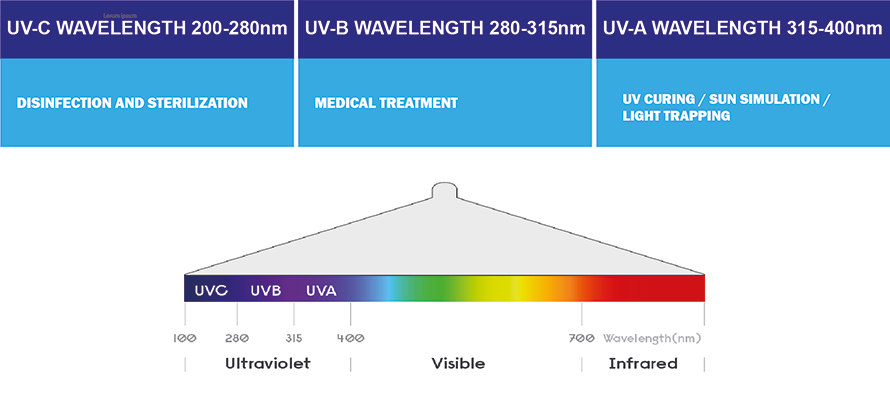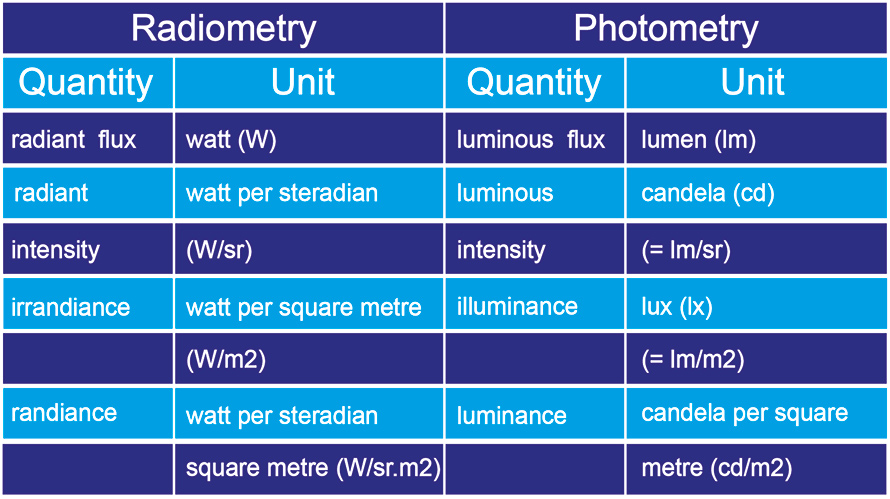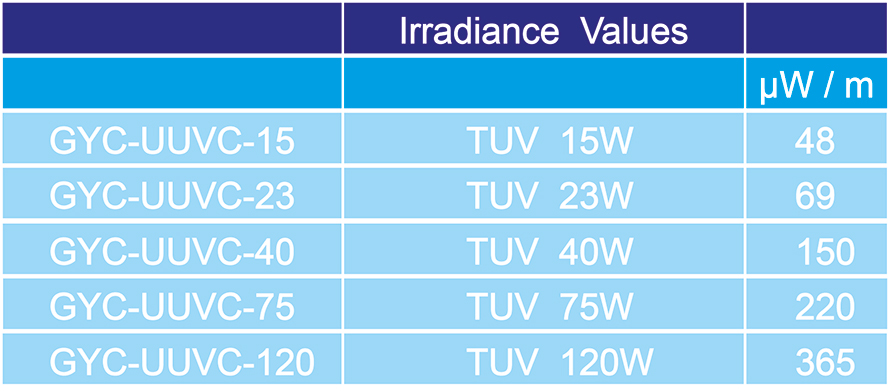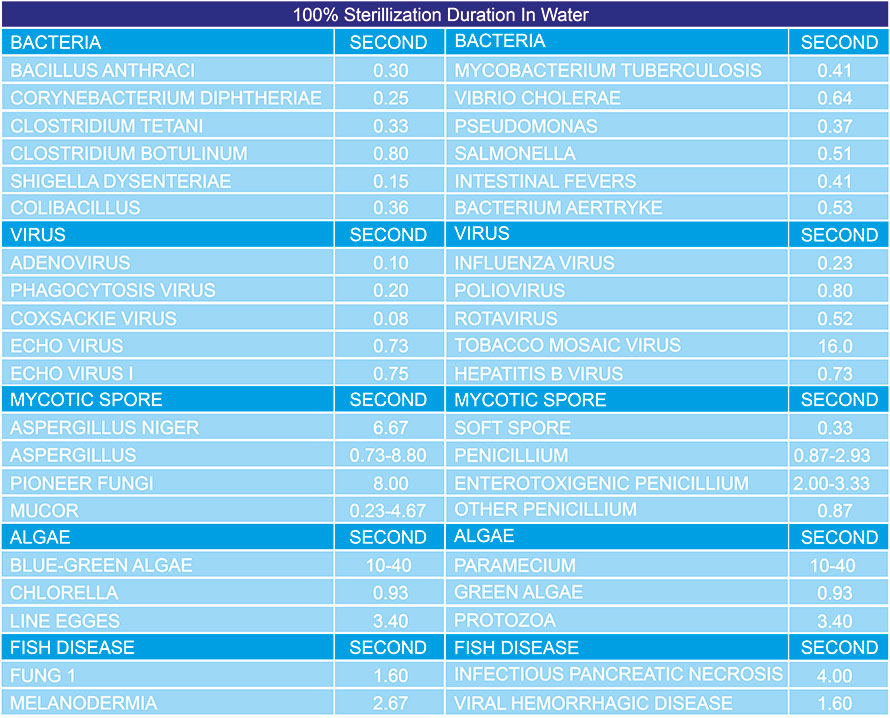Bacteria and virus exist in the air, water and soil, and on almost all of the surface of food, plants and animals. Most of bacteria and virus don’t hurt human bodies. However, some of them mutate to damage the body’s immune system, threatening human’s health.
What is Ultraviolet Radiation
The most common form of UV radiation is sunlight, which produces three main types of UV rays, UVA (315-400nm), UVB (280-315nm), and UVC (shorter than 280 nm). The UV-C band of ultraviolet ray with wavelength around 260nm, which has been identified as the most effective ray for sterilizing, is used for water sterilization.

Working Principle
The sterilizer integrates comprehensive techniques from optics, microbiology, chemistry, electronics, mechanics and hydromechanics, creating high intensive and effective UV-C ray to irradiate the flowing water. The bacteria and viruses in the water are destroyed by a sufficient volume of UV-C ray(wavelength 253.7nm). As the DNA and the structure of cells have been destroyed, the cell regeneration is inhibited. The water disinfection and purification accomplish completely. Moreover, the UV ray with a wavelength of 185nm generates hydrogen radicals to oxidize the organic molecules to CO2 and H2O, and the TOC in the water is eliminated.

Advantages of UV-C Disinfection and Sterilization
● Does not alter taste, pH, or other properties of water
● Does not produce disinfection byproducts of health concerned formed
● No risk of overdoing and can be easily regulated to changing water flow or water properties
● Effective against all types of microorganisms, including bacteria, viruses, fungi, and protozoa
● Reduces chemicals needed
● Safe and environmentally-friendly
Quantity and Unit of Ultraviolet Radiation

Irradiance Values of Our Equipment

Radiation Dosage
All micro organisms require a different dose to be inactivated.
Nt /No = exp.(-kEefft)………………1
Hence in Nt /N o = --kEefft…………2
● Nt is the number of germs at time t
● No is the number of germs before exposure
● k is a rate constant depending on the species
● Eefft is the effective irradiance in W/m2
The product Eefft is called the effective dose
Heff is expressed in W.s/m2 and J/m2
It follows that for 90% kill equation 2 becomes
2.303 = kHeff
Some k value indications are given in table 2, where they can be seen to vary from 0.2 m2/J viruses and bacteria, to 2.10-3 for mould spores and 8.10-4 for algae. Using the equations above, figure 14 showing survivals or kill % versus dose, can be generated.

Post time: Dec-20-2021




